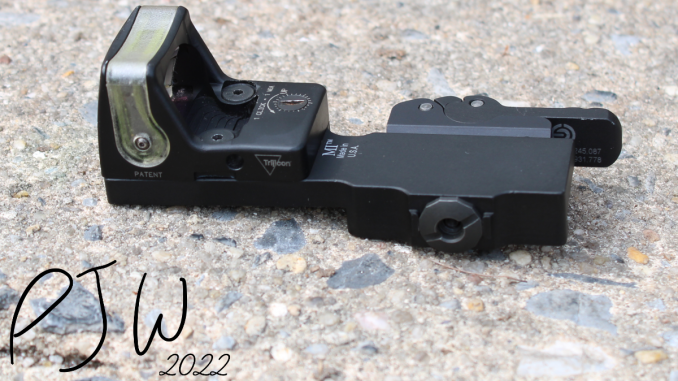
The Trijicon RMR. It’s the quintessential Miniaturized Red Dot Sight (MRDS). Everyone knows it, and most people love it. Well, at least they love the manually adjusted, LED models. However, the Dual Illuminated RMR models slightly predate the LEDs, but they tend to be looked down upon. Are they really as bad as their reputation states?
What Differentiates a Dual Illuminated RMR From An LED?
No batteries, and powered by radioactive tritium and fiber optic lit by the sun. The future is now, old man. Or well, the future of 2009. These Dual Illuminated (DI) RMRs were the first to hit the market, and the battery powered ones would come a little later.
On the DI RMRs, the dot automatically adjusts brightness depending on lighting conditions. While this may seem good, it leads to the primary issue of it. The dot tends to get lost in low-light conditions, especially when in use with WMLs. While there are auto-adjust LED RMRs, most people stick to the manual-adjust models, so that the dot is always the brightness you want. I’ve exclusively used the LED manual models myself, up until owning this DI RMR.
Aside from not using batteries, these DI RMRs are known for being extremely durable, as they are quite simple. The RMR is already a pretty bombproof optic, but the DI ones are even bombproof-ier. Aside from the glass, there really isn’t anything to break on a DI RMR.
Now with tritium being involved, that means recharging it. The tritium in the optic should last about 12 years, but it’ll have to go back to Trijicon for that to be done. That being said, you’ll never have to change batteries while owning the optic. Fans of these models also rave about the dot clarity, as it won’t react to users with astigmatism like the LED models do.
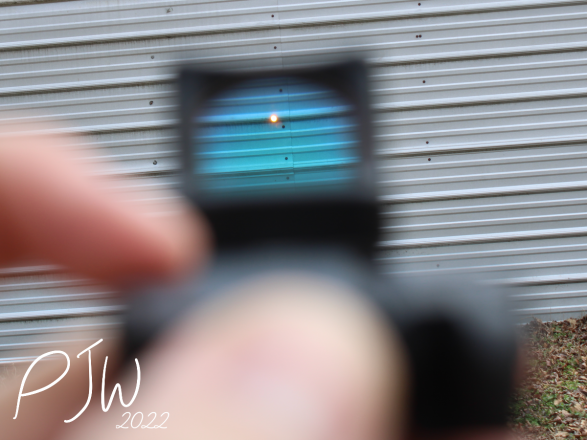
So it’s durable, won’t run out of batteries, and has a clear dot, but sucks at night. How did it fare while shooting?
Shooting the Dual Illuminated RMR
For the entirety of my testing, I used an RM05 RMR, mounted to a Gen5 Glock 17 MOS. I got this specific RM05 secondhand from a member on TacSwap, however it was recently made, and still has bright tritium. I had it mounted using an FCD RMR plate, and fired about 800 rounds with the RM05 mounted.
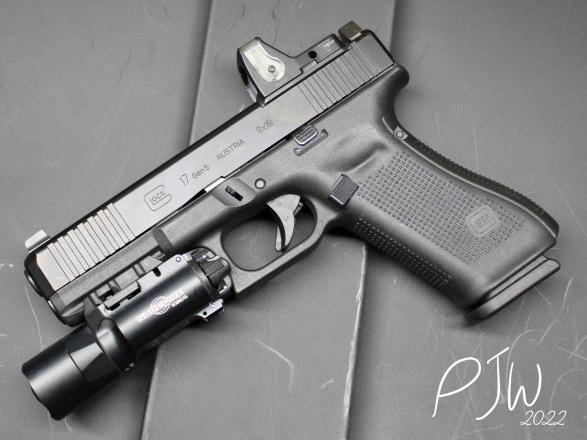
I’ve got about 20,000 rounds fired through LED RMR mounted guns, so there really wasn’t much familiarization to be had. I zeroed the optic at 25 yards from bench, and used that zero during the entire testing process. While this was not a durability test (it’s an RMR), I never ran into any breakages, loss of zero, or the optic coming loose from the plate.
I absolutely loved shooting with the RM05. I have good vision and no astigmatism, so LED optics don’t give me issues, but the clarity on the DI RMR was just great. Testing was exclusively shot outside during daytime hours and was done on both sunny, and cloudy/overcast days. Generally, the dot had excellent brightness when I was shooting outside, as long as it was not nighttime. I put up some good scores shooting my Glock with the RM05, so I cannot complain with the performance.
So, the DI RMR is excellent to shoot with, when the conditions are favorable. What happens when they aren’t favorable?
Using the Dual Illuminated RMR In Low Light
The Dual Illuminated RMRs absolutely blow for use in low-light conditions.
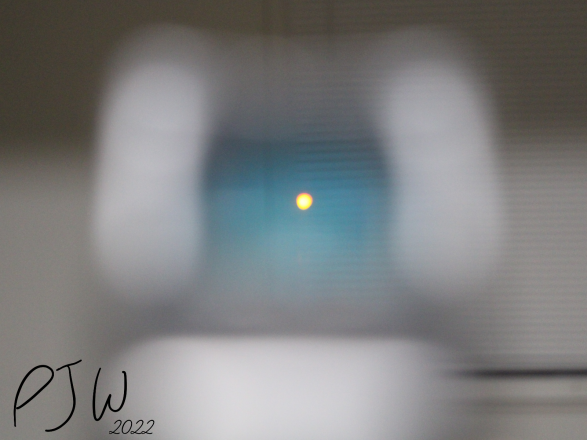
With good overhead lighting and a dark target room, the RM05 paints a picture of a clear, crisp dot.
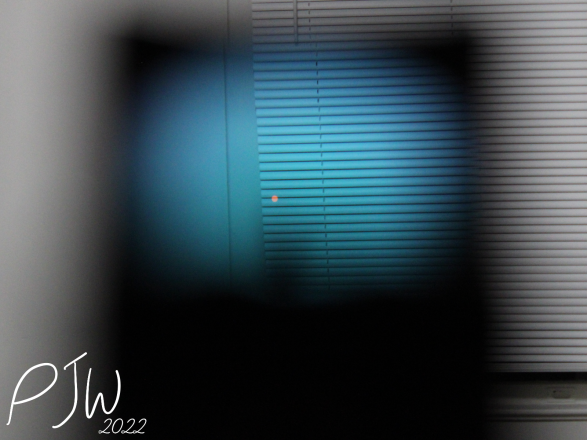
However, the second image, with no overhead lighting and a lit target room, shows a barely visible dot.
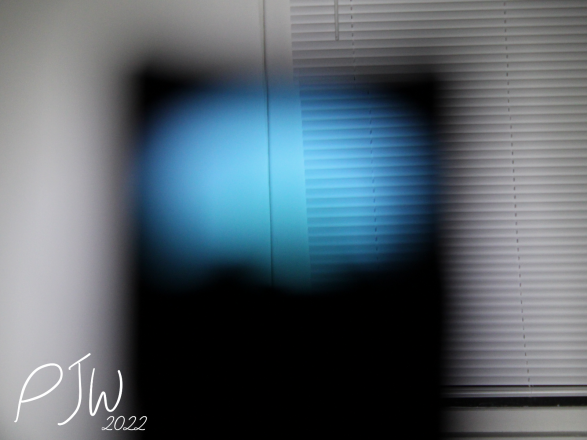
When aimed into a dark room, from a dark room, only using a WML to illuminate, the dot fades away. Needless to say, the optic is unusable in the worst possible lighting conditions.
The issue is “photonic barriers”. Photonic barriers are the idea of shooting from an area of light that does not match the target area. Essentially, light contrast. Photonic barriers are an issue for WMLs to be able to break through, and for your optic. Sage Dynamics did a good video on this a few years back, shows actual examples of realistic photonic barriers.
On a normal LED RMR, you’d just keep your brightness high, so that when you need to use it with your WML, the reticle is still visible. However, with the DI RMR, it is relying on the light over it, and the tritium within. When you shoot from an area of low light to higher, the optic has less light, and is harder to see. As shown above, the worst possible conditions for the DI RMR is no ambient light, with just a WML lighting the target. This lack of light for the optic, mixed with the target now getting a ton of light, leads to an unusable optic.
Is there any use for the DI RMR?
A Fair-Weather Optic
I think that the DI RMRs are excellent as “range” optics. As in, optics you only use when at the shooting range. I exclusively shoot outside, mostly during the day, and my RM05 has been a joy for that. All you have to do is to mount and zero the optic. No battery changes to fool with, less electronics to break. This would probably great on a range rental gun too, since they are essentially “mount and forget” optics.
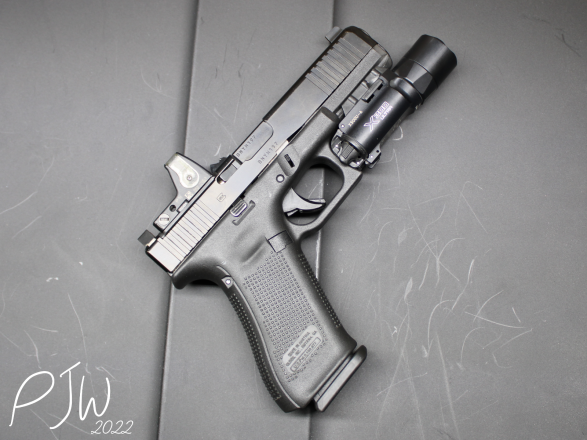
Some people really like piggyback/offset mounting these onto their rifles, however I still think that an LED RMR is a better option. For backup optic use, you need your backup optic to be there when you need it, which the DI RMR cannot guarantee.
However, these aren’t all that much cheaper than a standard LED RMR, so it really isn’t a great purchase for an individual. I own two LED RMRs and three Aimpoint ACROs, and I trust those for consistent, reliable use. However, the Dual Illuminated RMR is not anywhere near that reliable. I wouldn’t feel comfortable mounting one to a carry gun. You don’t want a “fair-weather optic” on your personal protection gun.
If you are set on an RMR for carry, get either the RM06 (3.25 MOA dot), or RM07 (6.5 MOA dot). Dan reviewed his RMR Type 2 a few years back, and I’ve had nothing but excellent experience with my two LED RMRs over the years. My ratty, old Type 1 RM06 is still kicking after 15,000 rounds, and I’d take that to Hell and back before I’d consider carrying with a dual illuminated RMR.
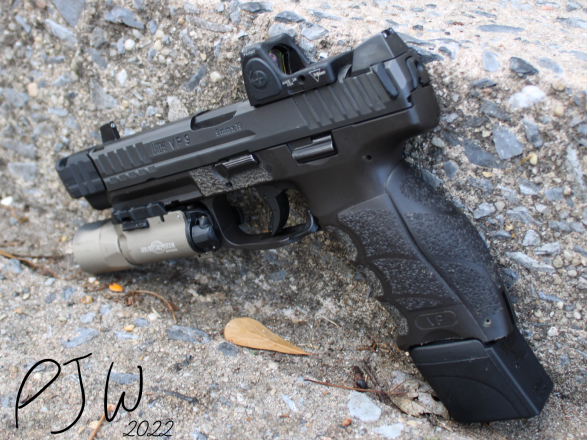





Be the first to comment